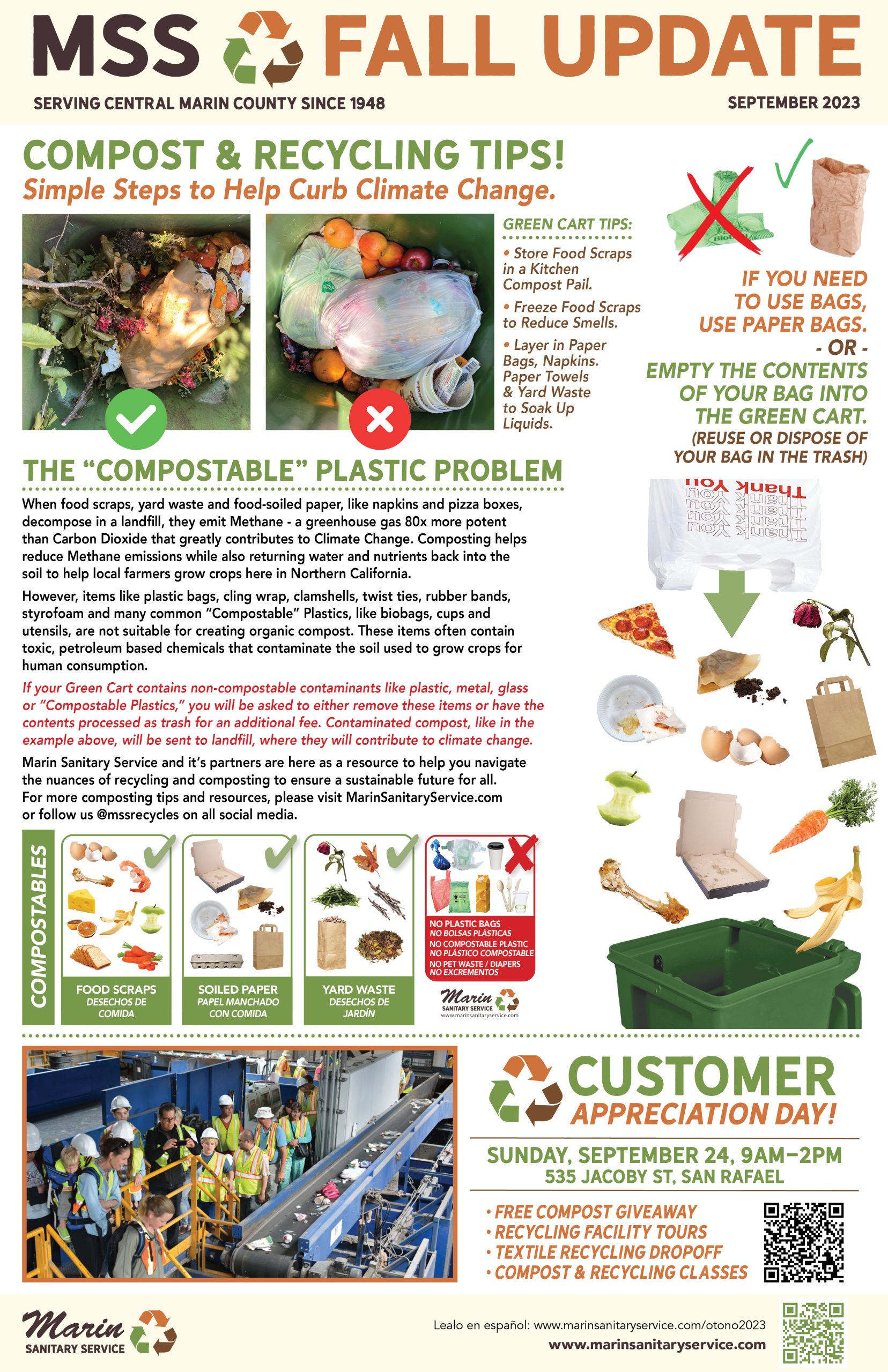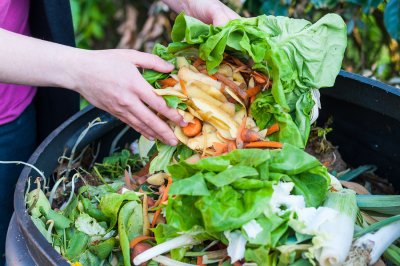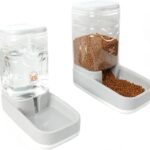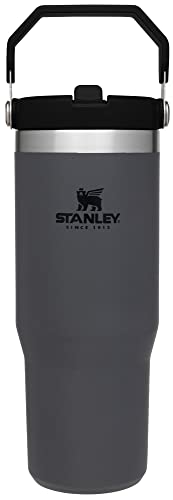As an Amazon Associate, I earn from qualifying purchases
Reduce food waste, reuse containers, and recycle materials to create a green kitchen. Make sustainable choices for a healthier planet.
A green kitchen promotes sustainability and reduces environmental impact. Simple changes can make a significant difference. Start by minimizing food waste through meal planning and composting. Reuse glass jars and containers for storage instead of buying new ones. Recycle paper, plastic, and glass according to local guidelines.
Opt for eco-friendly products like reusable shopping bags and biodegradable cleaning supplies. Energy-efficient appliances and mindful water usage also contribute to a greener kitchen. By adopting these practices, you not only help the environment but also create a healthier living space. Sustainable kitchens are achievable with conscious efforts and small, consistent actions.
Embracing Sustainability In The Kitchen
Creating a green kitchen benefits both you and the planet. Sustainable practices save money and reduce waste. Let’s explore how to embrace sustainability in your kitchen.
Why A Green Kitchen Matters
A green kitchen helps reduce your carbon footprint. It also promotes healthier eating habits. Sustainable kitchens use fewer resources and generate less waste.
By going green, you support a cleaner environment. Your kitchen can be a place of positive change. You can inspire others to adopt eco-friendly habits.
The Impact Of Kitchen Habits On The Environment
Every kitchen habit affects the environment. Daily actions like cooking and cleaning can waste resources. For example, using plastic wraps harms the planet.
Consider these common kitchen habits and their impacts:
- Excessive Water Use: Wastes a vital resource.
- Plastic Waste: Pollutes oceans and harms wildlife.
- Food Waste: Ends up in landfills, producing methane gas.
By changing these habits, you can make a big difference. Small steps lead to significant environmental benefits.
Starting With The Basics: Reducing Waste
Embarking on a journey towards a greener kitchen begins with reducing waste. Small changes can lead to significant impacts. Reducing waste not only helps the environment but also saves money. Start by making mindful choices in your kitchen.
Composting Kitchen Scraps
One of the simplest ways to reduce waste is by composting kitchen scraps. Composting turns food waste into valuable fertilizer for your garden.
- Collect vegetable peels, fruit scraps, and coffee grounds.
- Avoid composting meat, dairy, and oily foods.
- Use a compost bin with a lid to minimize odors.
Composting reduces landfill waste and enriches your soil. It’s a win-win for you and the planet.
Choosing Reusable Over Single-use Items
Choosing reusable items significantly cuts down on kitchen waste. Replace single-use items with durable alternatives.
| Single-Use Item | Reusable Alternative |
|---|---|
| Plastic bags | Cloth shopping bags |
| Paper towels | Cloth napkins |
| Plastic wrap | Beeswax wraps |
By switching to reusable items, you reduce the amount of trash your kitchen generates. Simple swaps can make a big difference.
Remember, every small step towards reducing waste counts. Start with these tips to create a greener kitchen.
Energy Efficiency In Appliances And Cooking
Making your kitchen green saves money and the environment. Energy-efficient appliances and smart cooking habits reduce power use. Here are tips to make your kitchen energy-efficient.
Selecting Energy Star Rated Appliances
Energy Star rated appliances use less energy. They are better for the environment. Look for the Energy Star label when shopping for new appliances.
- Refrigerators: Modern models use less energy. Choose one with the Energy Star label.
- Dishwashers: Use less water and energy. Energy Star models save on your bills.
- Ovens: Convection ovens cook faster and use less energy.
Conserving Energy While Cooking
Use energy-saving techniques while cooking. These small changes add up.
- Match pot size to burner: Use the right size burner for your pot. This saves energy.
- Use lids: Cover pots and pans. Food cooks faster, using less energy.
- Microwave: For small meals, use the microwave. It uses less energy than an oven.
- Batch cooking: Cook large meals and freeze portions. This reduces cooking frequency.
Implement these tips to make your kitchen greener. Save energy and protect the planet.

Credit: hhsbearpress.com
Water Conservation Strategies
Conserving water in the kitchen helps save this precious resource. Simple changes can make a big difference. Here are some easy Water Conservation Strategies to make your kitchen greener.
Fixing Leaks Promptly
Leaks waste a lot of water. Fix them quickly to save water. Check your faucets and pipes regularly. Even small drips can waste gallons of water.
Here’s a quick tip: Place a bowl under the faucet overnight. If it fills, you have a leak. Fix it promptly.
Smart Dishwashing Techniques
Dishwashing uses a lot of water. Use smart techniques to save water. First, scrape food off plates instead of rinsing them.
If you use a dishwasher, wait until it’s full before running it. Use the eco or short wash setting to save water and energy.
When washing dishes by hand, fill one basin with soapy water. Use another basin for rinsing. This method uses less water than running the tap.
Here’s a handy table to summarize:
| Method | Water Saving Tip |
|---|---|
| Dishwasher | Run only when full, use eco settings |
| Hand Washing | Use two basins: one for washing, one for rinsing |
These tips are simple but effective. They make a big impact on water conservation. Implement them and watch your water usage drop.
Sustainable Shopping And Food Choices
Creating a green kitchen starts with sustainable shopping and food choices. By making mindful decisions, you can reduce waste and support the environment.
Buying Local And Seasonal Produce
Buying local produce reduces the carbon footprint from transportation. Local farmers markets offer fresh and nutritious options. Seasonal produce is often cheaper and tastier.
- Visit farmers markets weekly
- Check local farm stands
- Join a community-supported agriculture (CSA) program
Use a seasonal produce guide to know what’s in season. This ensures you always buy the freshest items.
Opting For Organic And Fair-trade Products
Organic products are grown without harmful chemicals. This makes them better for your health and the planet. Look for the USDA Organic label.
Fair-Trade products ensure farmers are paid fairly. This supports sustainable farming practices. Look for the Fair-Trade Certified logo.
| Product | Organic | Fair-Trade |
|---|---|---|
| Fruits and Vegetables | Yes | No |
| Coffee | Yes | Yes |
| Chocolate | Yes | Yes |
Choose products with both labels to maximize benefits. This way, you support both your health and the environment.

Credit: housekeep.com
Minimizing Plastic Use In The Kitchen
Creating a green kitchen involves many small changes. One of the most impactful is minimizing plastic use. Plastics are harmful to the environment and our health. Here’s how you can reduce plastic in your kitchen.
Alternatives To Plastic Wrap And Bags
Plastic wrap and bags are convenient but harmful. Luckily, there are eco-friendly alternatives:
- Beeswax Wraps: These wraps are reusable and biodegradable.
- Silicone Food Covers: These stretchable covers fit various container sizes.
- Reusable Fabric Bags: Use these for groceries and snacks.
- Parchment Paper: This is a great substitute for plastic wrap.
Switching to these alternatives can greatly reduce your plastic waste. Plus, they are often more durable than plastic.
Storing Food In Glass Or Stainless Steel
Plastic containers can leach chemicals into food. Instead, use glass or stainless steel containers:
- Glass Jars: Perfect for storing dry goods like rice and beans.
- Stainless Steel Containers: These are durable and don’t retain odors.
- Glass Baking Dishes: Use these for cooking and storing leftovers.
- Mason Jars: Ideal for liquids and small portions.
Using glass and stainless steel containers keeps your food safe and fresh. They also last longer, saving you money over time.
Cleaning Green: Natural And Non-toxic Methods
Cleaning your kitchen doesn’t have to harm the environment. Using natural, non-toxic methods can keep your kitchen sparkling and safe. These methods are better for your health and the planet. Below, we’ll explore some effective ways to clean green.
Homemade Cleaning Solutions
Homemade cleaning solutions are simple and affordable. They use ingredients you probably already have.
- Vinegar and Water: Mix equal parts vinegar and water. This solution can clean countertops, sinks, and even floors.
- Baking Soda and Water: Make a paste of baking soda and water. Use this for scrubbing tough stains.
- Lemon Juice: Lemon juice can help remove grease and leave a fresh scent.
Using these solutions is easy. They are safe for your family and pets.
Eco-friendly Cleaning Products
If you prefer store-bought products, choose eco-friendly options. Look for products with natural ingredients and minimal packaging.
| Product | Benefits |
|---|---|
| Biodegradable Dish Soap | Safe for waterways and marine life |
| Plant-Based All-Purpose Cleaner | No harsh chemicals, safe for surfaces |
| Reusable Cleaning Cloths | Reduces waste, can be washed and reused |
Using eco-friendly products supports a healthier environment. Your kitchen stays clean without harmful chemicals.

Credit: marinsanitaryservice.com
Educating And Involving The Household
Creating a green kitchen is more effective when everyone participates. Educating and involving the household ensures that eco-friendly practices are understood and followed by all. This section will provide practical tips on how to share and implement green habits with your family.
Sharing Eco-friendly Practices With Family
Start by sharing simple eco-friendly practices with your family. Explain the importance of reducing waste and conserving resources. Use clear and easy-to-understand language.
- Teach kids to turn off lights when not in use.
- Show everyone how to properly sort recyclables.
- Discuss the benefits of using reusable bags and containers.
Sharing knowledge helps everyone understand their role in maintaining a green kitchen. Use visual aids like posters or charts for better understanding.
Making Green Habits A Group Effort
Encourage family members to participate in green activities. Involve them in daily tasks that promote eco-friendly habits.
- Assign recycling duties to each family member.
- Plan and cook meals using local and organic ingredients together.
- Set up a composting system and let kids help with it.
Making green habits a group effort fosters teamwork and responsibility. Celebrate small victories to keep motivation high.
| Task | Who Can Do It |
|---|---|
| Recycling | Everyone |
| Composting | Kids with supervision |
| Shopping with reusable bags | Adults and teens |
Involving the household in green practices makes the process fun and educational. Everyone learns the value of sustainability.
Continuous Improvement And Staying Informed
Creating a green kitchen is an ongoing journey. It’s essential to stay updated. Being informed about new eco-friendly practices helps reduce your environmental impact. This section will focus on two key areas: keeping up with eco-friendly innovations and adjusting habits for greater impact.
Keeping Up With Eco-friendly Innovations
New eco-friendly products and technologies emerge constantly. Stay informed by reading green blogs and following eco-friendly influencers. Subscribing to newsletters from environmental organizations also helps. Here are some steps to stay updated:
- Join eco-friendly forums: Share ideas and learn from others.
- Attend green events: Webinars and local workshops are great options.
- Follow green brands: They often share new products and tips.
Adjusting Habits For Greater Impact
Small changes can make a big difference. Adjusting habits ensures your kitchen stays green. Here are some tips to help:
- Buy in bulk: Reduce packaging waste by buying larger quantities.
- Use reusable containers: Store food in glass or metal containers.
- Compost food scraps: Turn kitchen waste into nutrient-rich compost.
Track your progress. Use a checklist to ensure you are maintaining your green habits. Here is a simple table to help you track:
| Habit | Frequency | Notes |
|---|---|---|
| Buy in bulk | Weekly | Note any challenges |
| Use reusable containers | Daily | Track types used |
| Compost food scraps | Daily | Monitor compost quality |
By staying informed and adjusting habits, you can continuously improve your green kitchen. Make these practices part of your daily routine.
Frequently Asked Questions
How Can You Reduce Reuse And Recycle In The Kitchen?
Reduce waste by meal planning and using leftovers. Reuse glass jars and containers for storage. Recycle paper, plastic, and cans. Compost food scraps. Choose reusable bags and utensils.
What Are 3 Ways You Can Reduce Reuse Or Recycle?
1. Use reusable bags and containers to minimize plastic waste. 2. Repurpose old items into new ones, like turning jars into planters. 3. Sort and recycle paper, glass, and plastic to reduce landfill waste.
How Can We Be Environmentally Friendly By Reusing Reducing And Recycling?
Reusing items reduces waste and saves resources. Reducing consumption lowers environmental impact. Recycling conserves raw materials and energy. Together, these actions minimize pollution and help protect the planet.
How To Be More Environmentally Friendly In The Kitchen?
Use reusable bags and containers. Compost food scraps. Choose energy-efficient appliances. Buy local and organic produce. Reduce water waste.
How Can I Reduce Kitchen Waste?
Start by planning meals, using leftovers, and composting organic waste.
What Are Eco-friendly Kitchen Products?
Choose reusable containers, bamboo utensils, and cloth napkins to minimize waste.
How Do I Recycle Kitchen Items?
Sort recyclables like glass, plastic, and paper according to local guidelines.
What Is Kitchen Composting?
Collect organic waste like fruit peels and coffee grounds to create nutrient-rich compost.
How Do I Reuse Kitchen Scraps?
Use vegetable scraps for broth or regrow herbs from cuttings.
What Are Sustainable Kitchen Practices?
Buy in bulk, use reusable bags, and avoid single-use plastics.
Conclusion
Creating a green kitchen doesn’t have to be complicated. Start by reducing waste, reusing items, and recycling properly. Small steps can make a big difference. Embrace sustainable practices to save money and help the planet. Your efforts will contribute to a healthier environment for everyone.
Read more Choosing Durable And Sustainable Cookware: Smart Picks
Read more Best Eco-Friendly Kitchen Gadgets: Shrink Your Footprint!
As an Amazon Associate, I earn from qualifying purchases













Leave a Reply